Best Cloud Operating Systems
In this article, you will learn about the best cloud operating systems. But before going to the best cloud OS, you must know about the cloud operating system.
What is Cloud Operating System?
The cloud OS is a browser-based operating system that works for real-time support. It is developed for visualization in cloud computing. It provides a virtualized environment that runs on cloud computing. It helps to manage the machines, processes of virtual servers, execution, and infrastructure. It also manages software and back-end hardware resources. Although, the features of the cloud OS differs depending on the virtual environment and cloud services used. It is a lightweight OS that stores data and connects to a remote server to access web-based apps. Cloud OS include Google Chrome operating system and Microsoft Windows Azure.
As a cloud, users may manage the tasks from their mobile internet devices and tablets in the same way that they may manage them from their systems because the internet-based users may work on the go with a cloud operating system. A cloud operating system improves productivity by allowing greater utilization of resources such as storage, processing, and a network of data centers. At the same time, it boosts employee productivity by delivering applications faster and more effectively across all clouds, including public, private, and hybrid. Additionally, it improves security and compliance.
Advantages and disadvantages of Cloud Operating System
There are various advantages and disadvantages of the cloud operating system. Some advantages and disadvantages of the cloud operating system are as follows:
Advantages
- Cost-Effective
The Cloud OS is highly cost-effective. You must pay only once to get the service. On the other hand, when you use a regular operating system, there are many additional costs, such as an antivirus application, storage costs, and a monthly operating system membership price. Furthermore, people require some utility software to keep the system updated. There is no need for such a large investment in a cloud-based operating system. - No risk of viruses
Cloud antivirus management is a concern for cloud service providers. Because it does not directly contact with your computer, there is less difficulty and risk of the virus. It has decreased your pain, increased productivity, and provided you with a stress-free life. There is a virus risk with traditional OSs, but there is no virus risk if you use an online-based OS. - Easy Software upgrades
When you use a cloud-based OS, you don’t have to worry about updating your OS. There is no requirement to consume extra money, time, or effort on upgrading. Traditional systems appear to take a long time to upgrade the operating system, but you always get the most recent version of the operating system on the online operating system. - High Speed
There are numerous causes for OS performance problems, such as open apps, insufficient memory, computer viruses, etc. In the case of cloud OS, there is no matter for compromise in speed. It is a very fast OS because it’s not tied to any system hardware. So, it doesn’t matter if you’re utilizing little RAM and running numerous programs at the same time using cloud OS.
Disadvantages
- It provides limited features.
- Cloud operating system hardware failure may cause a loss in data.
- It needs an internet connection continuously.
- It doesn’t perform on a low-speed connection.
Top Cloud Operating Systems
The booting of a cloud operating system takes only a few seconds due to its simplicity. It may be used as a stand-alone operating system or immediately boot into the main operating system to the preference. Here, you will learn the top cloud operating system one by one.
- Netvibes
- CloudMe
- Amoeba OS
- EyeOS
- Ghost OS
- OSv
- Joli OS
- Slap OS
- Slive OS
- LucidLink OS
Netvibes
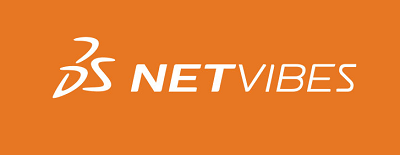
Netvibes is a cloud operating system that may be used as an ad-free cloud computing solution by running within a browser. Furthermore, the option to customize it takes it a step further because the characteristics are distinctive and fit in with the environment. Everything that happens is recorded on the dashboard: favorite websites, news, apps, social media, and smart gadgets.
Features of Netvibes
There are various features of Netvibes. Some features of Netvibes are as follows:
- It includes a word editor, compatible environment for groupware, application for presentation, SMTP client for email, etc.
- It is a free operating system that may download and install as a plug-in in any common browser. It primarily focuses on platform and device independence and collaboration with browsers and operating systems.
- If you upgrade to the premium version, you’ll be able to collaborate with your personal data, evaluate business matrices, and create drag-and-drop charts, among other things.
- It provides support of more than 100 mobile devices, and you may change files for sharing when needed.
- You may automate operations by defining triggers from the dashboard, and you may make data-driven decisions by looking at the visualization on the monitor.
- Keeping data online enables the user to operate with both local and cloud applications while maintaining optimal security.
CloudMe
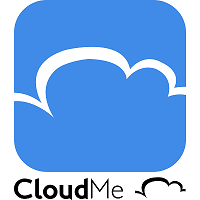
CloudMe was formerly known as iCloud. It is a European-based Cloud system that allows you to access your data from anywhere and file sharing, music streaming, and photo storage. CloudMe is free for personal users, but it also has commercial possibilities. It offers a GUI and may be easily handled by collaborating with others. It is suitable for freelancers, small businesses, and organizations with similar interests. It is a cloud-based desktop with information sharing and task management capabilities.
Features of CloudMe
There are various features of CloudMe. Some features of CloudMe are as follows:
- It provides a list of the latest Hive activity and lets users send messages to users and groups.
- Users may upload or import photographs from Flickr, messaging, and videos from YouTube and Vimeo.
- It is simple to navigate between different accounts, engage with other members, and manage tasks.
- It includes various facilities, such as bookmarking, online notes, tweeting, and a chat room.
- It offers modular app architecture for plugging in the tools needed to plan and complete the job.
Amoeba OS

It is an advanced and important cloud operating system in this list. It is a general-purpose distributed OS. It was designed and developed by Andrew S. Tanenbaum and some others developers. Its primary purpose is to work as a single integrated system. It didn’t launch any new version for the last 23 years.
It is a microkernel-based OS that provides multithreaded programs. It works like the remote procedure call mechanism to interact between the threats. It is written in the Python Programming Language. It has four fundamental designs: performance, parallelism, transparency, and distribution. It uses the high-performance FLIP network protocol for LAN connection. It includes various supported platforms like Sun 3/50 and 3/60, Motorola 68030, MIPS, NS 32016, i386/i486, SPARC, and VAX.
Features of Amoeba OS
There are various features of Amoeba OS. Some features of Amoeba OS are as follows:
- It is designed so that it may operate in both distributed and parallel modes, depending on the project’s need.
- You don’t have to allow different remote login instructions for different processors when using Amoeba. Similarly, there is no requirement for distinct remote mount actions for distant files.
- The machine may be distributed across a building via a LAN even without a machine.
- User-level programs determine the application’s policy. As a result, the users don’t need to know where the files are located or the position of the processors.
EyeOS
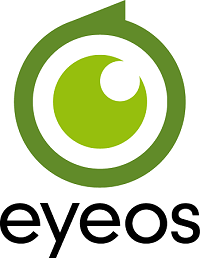
The EyeOS is a cloud computing web desktop that is looking for ways to facilitate collaboration and communication. It’s a web-based desktop application that runs on a private cloud. It is referred to as a cloud desktop due to its distinct user interface. It provides various features, including file management systems, client applications, collaborative tools, information tools, etc. This free cloud operating system is built on JavaScript, XML, and PHP.
Features of EyeOS
There are various features of EyeOS. Some features of EyeOS are as follows:
- It offers a desktop interface with 67 programs and system benefits.
- It offers free internet access points in public library networks, academia, and other web venues, allowing users to work with network administrators and communicate with them.
- It supports the dynamic content. It is also equipped with a plethora of applications and a remote storage feature. Simultaneously, it supports independent browsers and platforms with sophisticated testing capabilities.
- It takes only one web browser to provide access to the EyeOS and its apps.
Ghost OS

Ghost OS stands for the Global Hosted Operating System. It is one of the most famous cloud operating systems. It is an open-source OS and compatible with the x86 platforms. It provides storage services with security. It may also be used as a distributed system with various website channels. It might be used for both individual and business uses.
Features of Ghost OS
There are various features of Ghost OS. Some features of Ghost OS are as follows:
- It is very easy to use. It also comes with quick files and folders managing facilities.
- Any type of data may be uploaded in this OS from any device and may be viewed and edited with any browser.
- Files may be moved very easily from a hard disk to the cloud or from the cloud to a hard disk with online editing capabilities.
- You may share or transfer the file quickly by sending those links and mounting them as a Windows drive, just like a USB flash drive.
OSv
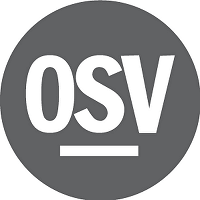
OSv is an open-source OS. It is designed and developed for better performance and effortless management. An overhead hypervisor may be minimized because it may provide extreme optimizations. It provides a straightforward API for managing any virtual machine component and qualifies it for virtual machine images. It provides the ability to execute Linux applications, but it is not Linux itself.
Features of OSv
There are various features of OSv. Some features of OSv are as follows:
- It is useful for the critical management interface and serves as a mechanism for passing configuration data.
- Users may download and execute the interface on a cloud server under the BSD license from any available resource.
- It has its own app for image systems called Caspstan.
- It also contains services for directly controlling JAVA apps and making the process straightforward.
Joli OS
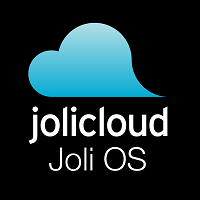
It is another important cloud operating system. It was designed and developed for recycled and notebook computers. It is a cross-browser, multiuser, and user-friendly Web Desktop Environment. It includes a number of useful web office programs that make the system more adaptable. It’s a multiuser OS that runs on LAMP and is an independent platform. It had over 2 million users worldwide. It had over 15000 applications over 15 years.
Features of Joli OS
There are various features of Joli OS. Some features of Joli OS are as follows:
- You may use all of the cloud programs, such as Google Drive, Dropbox, and Mediafire while managing your entire cloud life using Jolicloud Me.
- Several OS users may share a single account on the Jolicloud server. The user has their desktop, workspace, and workspace.
- Its features are accessible via API and are supported by social media networks such as Facebook, Flickr, Instagram, Picasa, Tumblr, and Twitter.
- It has over 15 years of cloud computing experience and offers over 15,000 applications that you may use for any purpose.
Slap OS
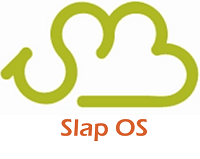
Slap OS is one of the main important OS in the cloud OS. It mixes grid computing and commercial resource modeling, and it may be used to sell software or services by anyone. A cloud operating system manages and provisions OSs using simple language. The SLAP OS master and nodes may be utilized at home or integrated with processes that are the 3 to 4 main use cases for distributed cloud computing.
Features of Slap OS
There are various features of Slap OS. Some features of Slap OS are as follows:
- It offers a useful solution to automate provisioning, disaster recovery issue tracking, monitoring, accounting, etc.
- It has two methods: initializing connection and registering computer partition. These methods are used to determine the software configuration and service level.
- It usually overlays to the OS for distributed POSIX infrastructure, focusing on service management.
- Its accounting model is basically designed for business apps where the basic concept includes movement, path, item, node, and resource.
Slive OS

It is an important operating system of cloud operating systems. It is based on the Silverlight. It is a free and open-source cloud operating system that makes it confident and comfortable to share files online. All applications in this Silverlight OS are installed on a remote server and may be accessed via a browser. The user has no trouble installing applications and can share, drag and drop files. It enables users to write, play solitaire, take notes, listen to music, etc. It also has built-in apps like a file and internet explorer, a video and audio player, a rich text editor, a calculator, Notepad, Paint, Twitter client, Flickr viewer, YouTube viewer, games, an RSS reader, paint, etc.
Features of Slive OS
There are various features of Slive OS. Some features of Slive OS are as follows:
- It is a free and open-source OS.
- It provides various features, including wallpapers, themes, user picture management, etc.
- The homepage has Microsoft-like elements like the start menu, taskbar, sidebar gadgets, and other tools.
- It provides the user with a comfortable experience from a traditional desktop application to the browser.
- It may be a very useful tool for flexible work on a non-personal computer.
LucidLink OS

It is another important cloud operating system. It is a free online open-source operating system that comes with several applications to read the news, customize documents, use Twitter, etc. It also helps with RSS feed readers, games, bash-like terminal apps, and third-party services. It offered a better software platform for handling building performance, which is known as ‘Lucid BuildingOS’.
Features of LucidLink OS
There are various features of LucidLink OS. Some features of LucidLink OS are as follows:
- It stores data throughout the portfolio and facilitates operations and collaboration with other sharing drives.
- Any type of document may be edited without even having to use a computer. The accessibility becomes very user-friendly simply by using a browser machine.
- It provides highly customizable services, one of which is multilingual support.
Conclusion
Cloud operating system is an easy-to-use secured service for implementing cloud computing. Cloud OS aids in the management of several virtual computers at the same time. It is quite useful in controlling a cloud environment and configuring the dashboard to fulfill certain goals. You may also save time and enhance efficiency by having access to all of the necessary software for both professional and personal use in one location.
Furthermore, some of these cloud OS offer a business solution that enables you to take a data-driven strategy and implement result-driven solutions. Every OS has various characteristics, so explore and verify the information before beginning to use a cloud OS.
